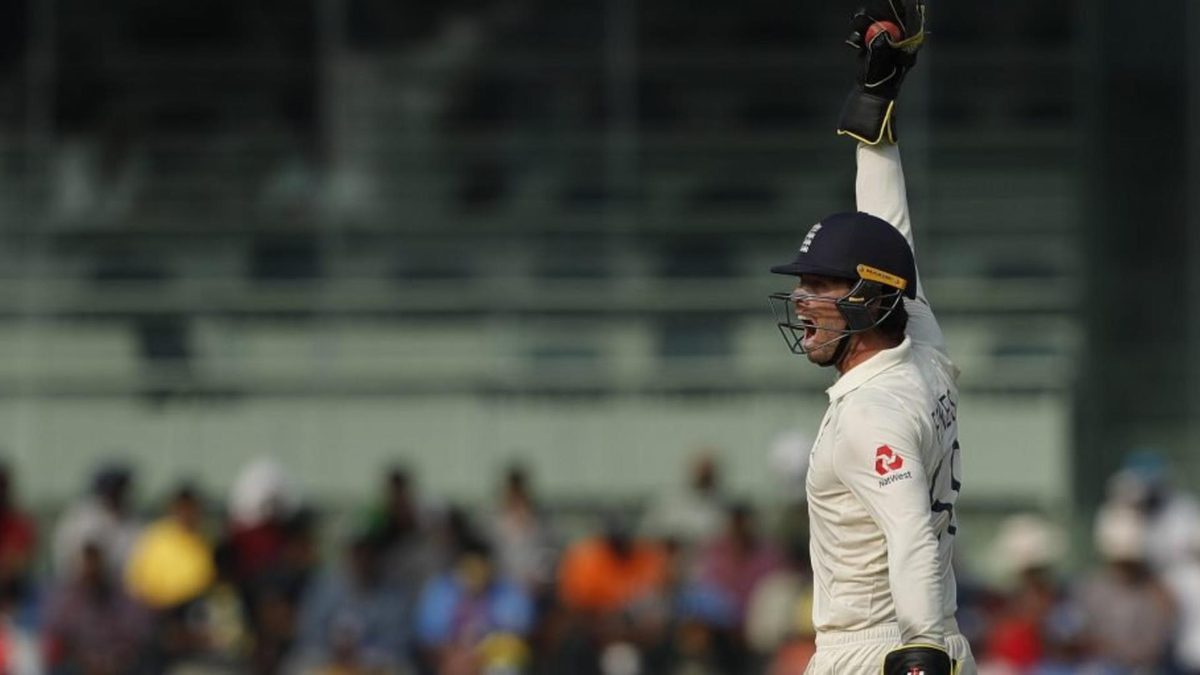
There’s a school of thought that a good wicketkeeper is like a good umpire, in that not noticing them at all is proof that they are doing a good job.
However, some of Ben Foakes’ efforts behind the sticks in India’s first innings were so exceptional you couldn’t help but be amazed.
One particular take came in for particular praise, going viral after a bootleg clip was posted on Twitter. Joe Root pitched the ball in the rough wide of the right-hander’s leg-stump, with the ball turning further away still. Ordinarily, onlookers would have shrugged and said “nothing the keeper could have done” as the ball spat over the keeper’s shoulder for four byes. But Foakes is no ordinary keeper, and he made the extraordinary look routine, completing the take with no drama before returning to the stumps, ready to make the most of any possible overbalancing.
Stunning take by Ben Foakes. Unsighted. Class. should have had a stumping too…#INDvsENG pic.twitter.com/o48MEI3pln
— simon hughes (@theanalyst) February 13, 2021
That was merely one moment in a record-breakingly spotless first-innings display, with India’s total of 329 all out the highest not to include an extra in Test history. Foakes was harshly denied a stumping off Rohit Sharma, but effected an excellent bail-removal to end Axar Patel’s maiden Test innings, spiriting off the pole-toppers in a flash.
Jos Buttler, the man whose absence allowed Foakes to make this second debut, is, of course, much improved as a keeper. He takes the chances he should and rarely makes obvious errors. But Foakes is an artist. To the spinners, his value is clear, but even to the seamers, his footwork and range of movement allows him to catch balls another keeper wouldn’t get close. This in turn allows first slip to start wider, with a greater area of ground then covered. Not unlike Jonty Rhodes was for South Africa around the turn of the century, he’s almost a genuine wicket-taking option by himself.
Still, he wasn’t perfect, because no one is, with a missed stumping chance off Rohit Sharma blotting his copybook in the second innings. But by then he’d shown his other value, with an unruffled, unbeaten 42 taking England past the follow-on. It was an innings that served essentially as the antithesis to Buttler’s trademark pyrotechnics. There was no marvelling at the shots he played or the aura he possessed, merely a calm, technically correct compiling of useful runs. So assured was he, you wondered whether his skill with the gloves had, in a way, held him back as a Test cricketer so far. Thinking back to the Sri Lanka series, there’s an argument England could have expected more before the series started from Foakes than, say, Dan Lawrence with the bat. But it would be backwards to Foakes without giving him the gloves, and then all of a sudden Buttler isn’t really England’s No.1 anymore.
Still, this won’t serve to dispel doubts raised over his ability to play the properly quick, raised in the Caribbean towards the end of his all-too-short first stint as a Test cricketer. But it did show that, after a challenging time dealing with the hasty fall of that inital axe, that Foakes has the mettle to make it as a Test cricketer.
This time round, there were expectations on him, and those ready to jump on any failures too, with supporters vocal in his and Buttler’s respective camps. There were expectations on England too, all of a sudden possessing hopes of an era-defining series result in India, and desperate for some ember to cling to to suggest their chances hadn’t been extinguished. Foakes dealt with all that, on a pitch as challenging as any England have faced in a long time.
Arguably, this hasn’t changed much, with Foakes only serving a reminder of his class. The truth, and the sadness, is that we knew he could do all this already, and it still might be right that he misses out once Buttler returns. Fitting in both is possible. Moving one of Ollie Pope, Joe Root or Ben Stokes up to first-drop and dropping one of the established top three isn’t ideal, but it does come with the added benefit of allowing Buttler to bat at No.6, where he averages more than 50, rather than at No.7, where he averages more than 20 runs less.
Even then, that would hardly settle the debate. All it would take is a run of form for someone in county cricket, or a couple of shaky batting performances, and the conversation would start again. This is a debate that isn’t going away any time soon. All anyone involved in it can do is their best, and hope that that’s enough.








